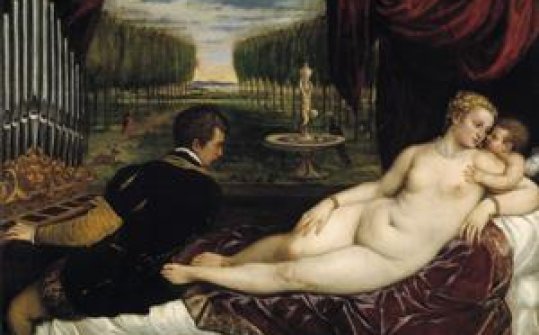The exhibition The Hermitage in the Prado, jointly organized by the Museo del Prado, the State Hermitage Museum and Acción Cultural Española (AC/E) within the context of the dual Spain in Russia and Russia in Spain Year, will bring together a broad selection of works illustrating the variety of the Russian museum's collections, ranging from the 5th century BC to the 20th century, and featuring outstanding works of archaeology, decorative arts, painting, sculpture and drawing. The exhibition will take up all of the newly expanded Prado temporary exhibition galleries, which will become, for more than four months, a 'Mini Hermitage'.
The St Petersburg Hermitage is one of the largest and most spectacular museums in the world. Housed in a complex of palace buildings alongside the River Neva and, above all, in the Winter Palace, which was the 18th century residence of Czarina Catherine the Great, the museum holds collections which range from the Egypt of the Pharaohs, Siberian cultures and the world of ancient Greece and Rome to Renaissance art, neo-classical sculpture and paintings of Matisse and Picasso. It is one of the very few museums that may be viewed as truly encyclopaedic, thanks to the collections assembled by the czars - which began with Peter the Great (1672-1725) -, along with avant-garde private collections from the 20th century.
The exhibition to be staged at the Prado represents a unique and remarkable opportunity to discover the treasures of the Hermitage, focusing on collections of archaeological gold, decorative arts and its magnificent archives of fine arts, painting, sculpture and drawing. The exhibition will present to the public the key elements of the palace-museum's history, the grandeur of its interiors and the magnificent works of art and archaeology to which it is home.
The pictorial range includes such major works as Titian's St Sebastian, Caravaggio's The Lute Player, Ribera's St Sebastian and Velázquez's The Lunch. There is also space for a further two major works from the Hermitage's collection of Rembrandt paintings: Portrait of a Scholar and Haman Recognizes his Fate. The selection of drawings will include works by Dürer, Rubens, Watteau and Ingres, as well as notable sculptures in the form of Bernini's terracotta model for the Ecstasy of Saint Teresa, and one of Antonio Canova's marble masterpieces, the Magdalen in Meditation. The exhibition will also feature major examples of the Russian museum's famed collections of Impressionist and Post-Impressionist painting, including Monet, Cézanne, Renoir, Gauguin and Matisse, the latter in the form of two works: Game of Bowls and The Conversation. Picasso is represented by three canvases, including Seated Woman and The Absinthe Drinker, while the selection likewise features two works of the Russian abstract avant-garde: Kandinsky's Composition VI and Malevich's Black Square.
The outstanding archaeological pieces include the gold Comb with Battle Scene, dating from the fourth century BC, and pieces of Siberian jewellery from the collections of Peter the Great. As for the decorative arts, the exhibits will include the spade decorated with silver, rubies and diamonds given to the Czar in the 18th century by the Indian Ambassador, and the vase in rock crystal, gold and diamonds created by the imperial family's jeweller Carl Fabergé (1846-1920).
 Tres hombres a la mesa
Tres hombres a la mesa









